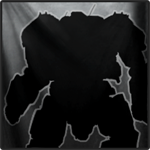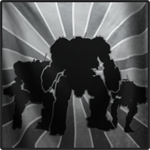 ObediahGenocide, on 01 November 2012 - 07:36 PM, said:
ObediahGenocide, on 01 November 2012 - 07:36 PM, said:
Please correct me if I'm wrong
I won't say you're wrong, but I will say that you are looking at the game from within a limited frame.
In a one-on-one battle, where the goal is simply to be the last 'mech standing, taking the heaviest, most heavily armed 'mech is a fairly good course of action. In a team-on-team battle, wherein each team is simply trying to cause as much destruction as possible, all other things being equal you may have a case that can be made (the Lyran Alliance would ostensibly agree with you).
In MWO, all other things are
not equal. First there is terrain. I would say you have cause to reconsider your assertion that the maps are featureless funnels. Nothing could be further from the truth. All maps have numerous points of cover, distinct "kill zones" where lines of sight are numerous and far-reaching, varying elevation levels, and two of them have one or more closed paths (tunnels, ravines, etc). All of these things directly affect how a 'mech can fight and how it can survive. If the only way you look at a 'mech battle is at point-blank range, sure, cover and elevation are meaningless to you. And for an assault 'mech that moves sub-60kph, that could be a true assessment of one's own battlefield reality. But that's not the reality for a faster 'mech that can disengage from a slower 'mech and use terrain to its advantage, either to break LOS or evade lines of fire from the limited pitch of torso-mounted weapons. A faster 'mech is by definition more lightly armed and armored, but its speed allows it to use to battlefield to its advantage more than a slow-moving assault can.
All maps also currently have objectives. You can win or lose the game on base capture. A faster 'mech will get to your point faster than you will get to his. In a one-on-one battle, this dynamic forces you to play close to your base. If you stray too far away, your poor speed makes you unable to capture his or defend yours. You play close to your base and hope he comes to you. Playing defensively is playing reactively, and that is an advantage for the attacking player. It makes your strategy predictable as you are anchored, while the opponent may come from a variety of angles. The above observations on terrain then enter play within the faster opponent's strategy and to their advantage.
From there you must consider role warfare. A balanced team will have its heavy-hitting assault 'mechs for brawling but it will also have its faster 'mechs for maneuvering and spotting. A Jenner toe-to-toe with your Atlas stands no chance, but a Jenner behind you while you're busy with his teammate in an Awesome has the leisure of picking a shot at your poorly armored rear torso. A Jenner with a couple of unfettered shots at the rear center of an Atlas has a very good chance of taking it down. Add to that the dynamic of indirect fire from LRMs, where faster 'mechs serve as sneak & peek spotters for their teammates and it doesn't matter how heavy you are. In fact your speed works to your disadvantage since you are less quickly moving to break LOS from the spotter, leaving you exposed to LRM fire for longer periods of time. Additionally you are less able to close to within the minimum range of those LRMs.
You add all these pieces together and you get several battlefield roles that need to be filled. If you take nothing but Atlases against a balanced, coordinated team, my money is on the balanced team every time. Sure you can do one thing extremely well, but your lack of battlefield advantage and role fulfillment leaves glaring weaknesses that even a team of modest skill can exploit.
If you continue to look at the game from within the frame of a solo player where your only consideration is your survival in the match, yes, you will continue to hold your view to be correct. But your frame is not the only one within the game is played. Once you realize the game is more dynamic than your ability to see it, your perspective will change.
 ObediahGenocide, on 01 November 2012 - 07:50 PM, said:
ObediahGenocide, on 01 November 2012 - 07:50 PM, said:






























